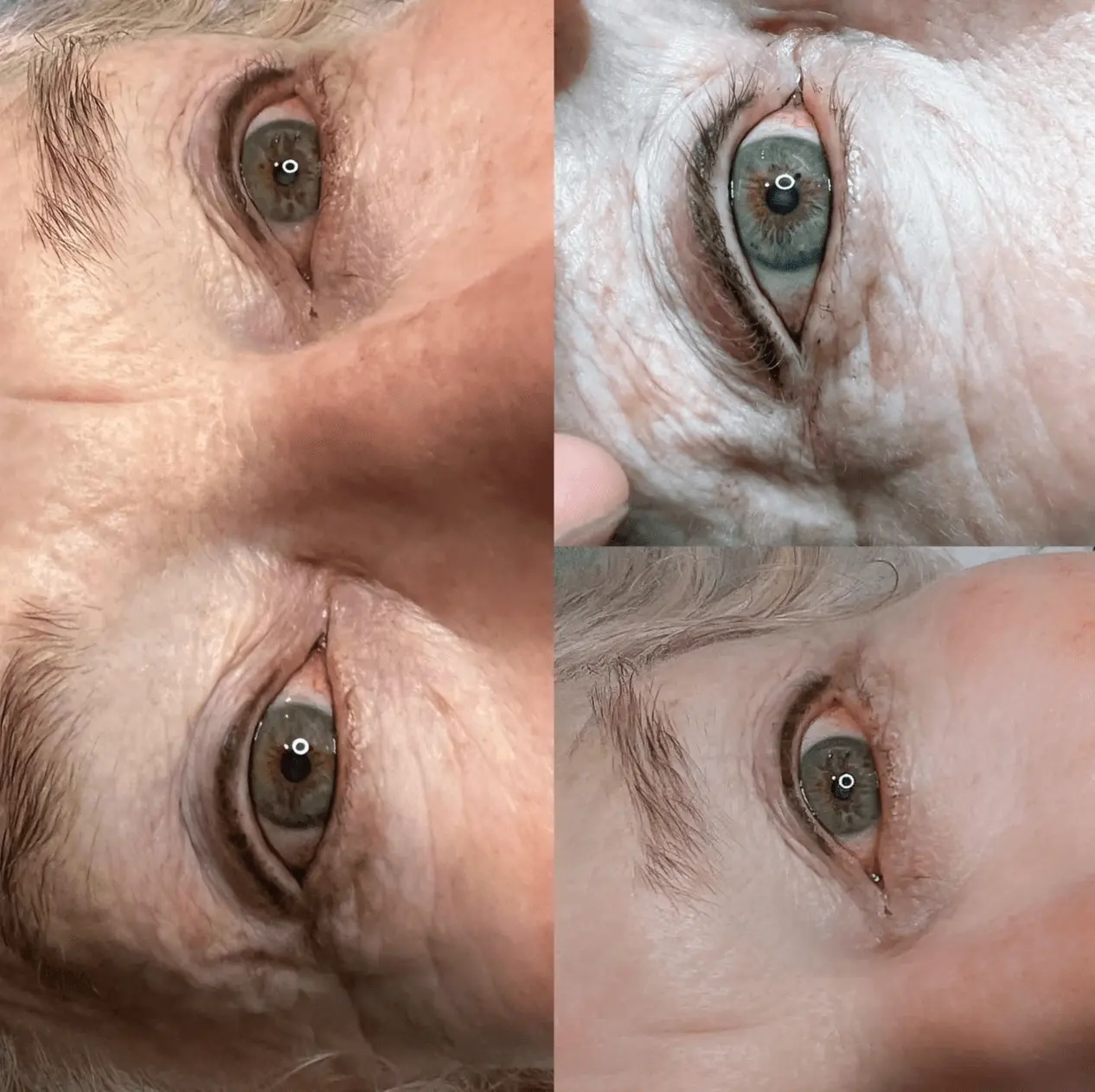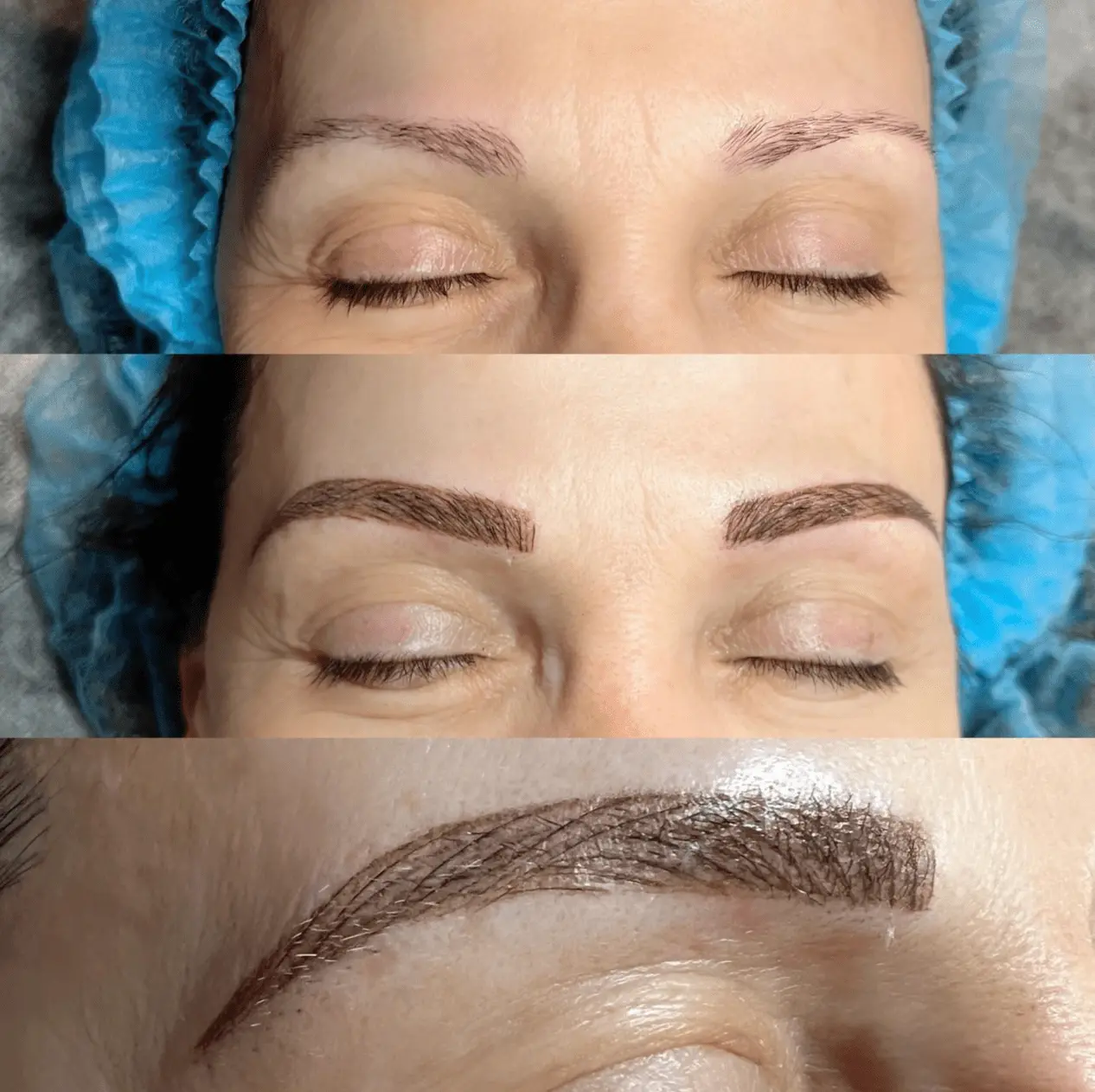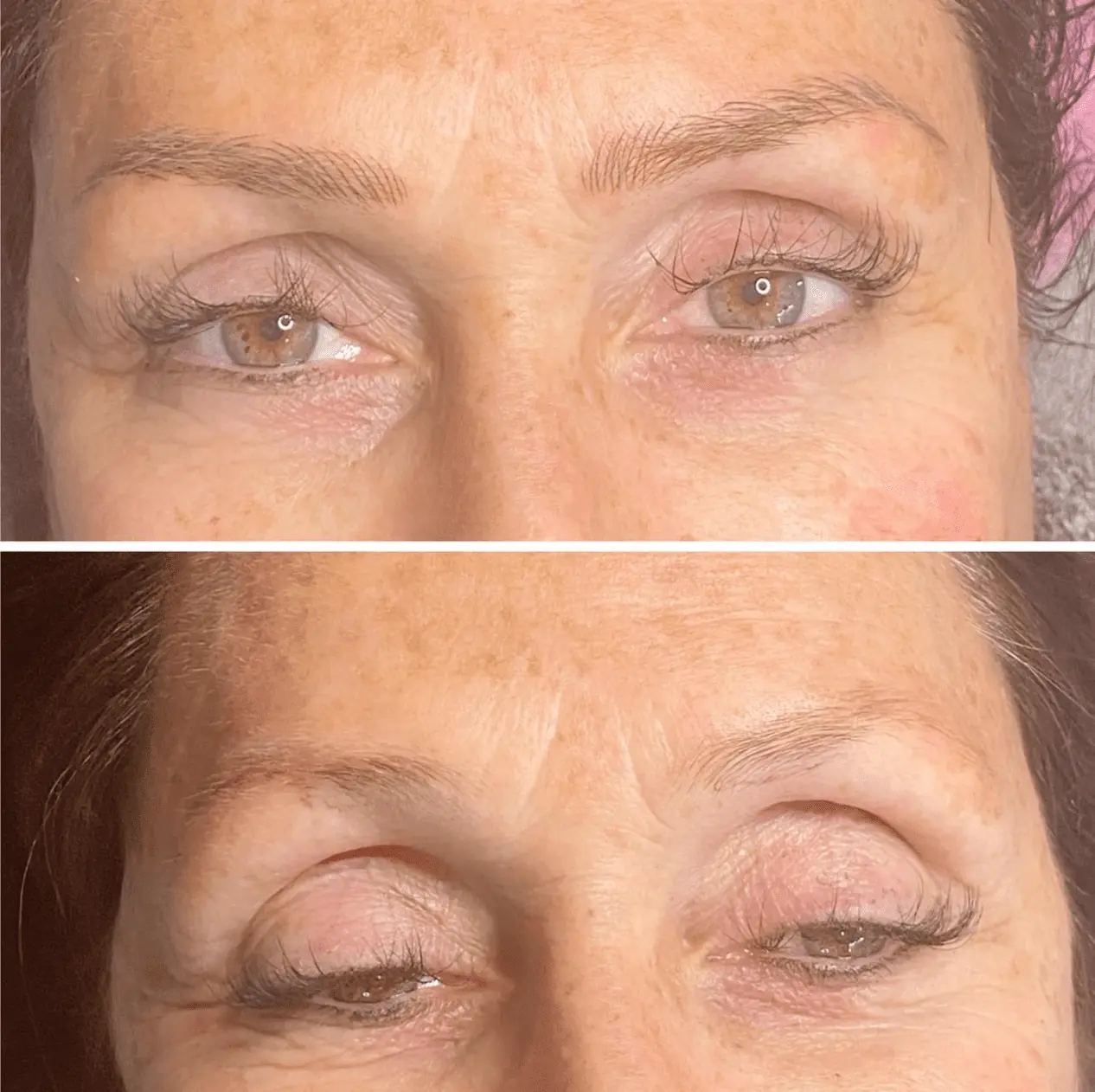Saline treatment is used to lighten tattoos, and it can be removed when done as a series. A manual tool or machine injects a saline solution into the areas of unwanted ink. Osmosis encourages the cells to release the pigment and draw it out from under the skin.

Learn about saline tattoo removal
You may be considering removal if you have a small tattoo or microblading procedure you no longer want.
In the past, laser tattoo removal was the most commonly used method for removing tattoos and permanent makeup. Recently, a new method has gained popularity among clients and tattoo artists due to its numerous advantages over traditional techniques.
It's called Saline Tattoo Removal!
Saline tattoo removal is a newer procedure that is offered as a natural alternative to traditional laser removal methods.
What is saline tattoo removal?
Saline tattoo removal involves using a saline solution to break up tattoo pigment and remove it from the skin by pulling it out. This process is different from tattooing or microblading as it reverses the process of injecting ink into the skin.
How Does it Work?
- A numbing cream is applied first to help reduce pain.
- The area is sterilized afterwards.
- The saline solution is implanted into the skin using a device similar to a tattoo gun.
- The solution breaks up the pigment and brings it to the skin's surface through osmosis.
- The extracted pigment forms a scab as it heals, and once it naturally falls off, you may notice your tattoo appearing lighter.
- The healing process typically lasts 8-10 weeks, depending on individual skin healing rates. Multiple sessions may be necessary, but only after the skin has fully healed.
What are the differences between saline and laser tattoo removal?
- The saline removal technique may be safer than laser removal, depending on the ink quality. In saline removal, ink is pulled from the skin into a scar that falls off, while the body absorbs the ink in laser removal. Saline removal uses saline (salt and water), which is safe.
- The effectiveness of saline solution for tattoo removal depends on the tattoo's colour, especially if there is white ink. Laser removal works by matching wavelengths of light to the tattoo's colour. If the laser cannot match the colour, it may be difficult to remove the tattoo. White ink poses a challenge for removal because it reflects all colours, and lasers cannot identify or remove it.
- Laser sessions are generally more costly than saline removal, with prices beginning at $500 per session compared to $150-$250 per saline tattoo removal session.
- This option benefits individuals with darker or sensitive skin as it helps prevent scarring.

Who is eligible to have the procedure?
The ideal candidate
Individuals with small tattoos or microblading/permanent makeup are eligible.
There are no severe skin or health conditions present that could delay the healing process.
Not a good candidate
Your large tattoos may be better suited for laser removal.
It has been observed that your skin is more likely to develop keloid scars.
— You're diabetic
What is aftercare?
- After completing the procedure, it is recommended that the wound be allowed to heal and dry independently.
- Employees working at high-risk facilities such as gyms, schools, and hospitals should cover wounds to prevent infections.
- It is essential to avoid pulling off the scab to allow it to naturally fall off and promote proper healing, which is critical to the osmosis process of lifting the ink.
- If there is lymph fluid drainage from the wound, gently blot the area with a clean paper towel without rubbing.
- Avoid using cosmetic products or makeup on the wound, as it can slow healing and potentially cause infection.
- It is essential to keep the wound dry to prevent infection and promote healing, especially when showering.
- Applying 2 or 3 drops of vitamin E oil is recommended to rehydrate the skin after the scab falls off.
